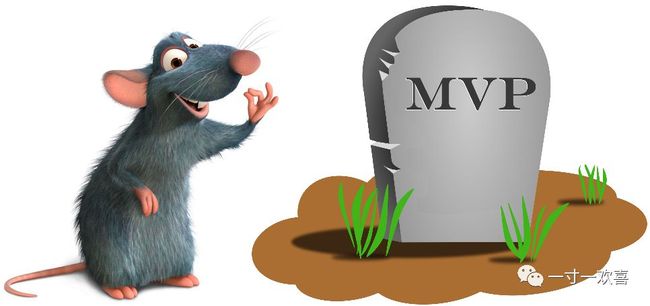Stop using “MVP” as an excuse to launch shit products
I’ve been facing a bit of cognitive dissonance recently around the concept of an “Minimum Viable Product”. In case you’re not from startup-land, the Minimum Viable Product (MVP) is the smallest, most concise version of your product you can initially release for feedback. It enables a full turn of the feedback loop with the least amount of development time and effort.
最近围绕“最小可行性产品(MVP)”的概念,我最近一直面临着一些认知冲突。假如您不在初创公司,最小可行性产品(MVP)是您可以首次发布的最小、最简洁的产品版本,发布后即可获得用户反馈。它可以保障以最少的开发时间和开发精力实现一个完整的反馈循环。
Basically it’s a product with just enough features to satisfy early customers, and to provide feedback for future product development. It was introduced in 2011 by Eric Ries in his now-famous book The Lean Startup. On the surface, it’s a perfect concept for working and improving your product fast.
基本上它只是一种仅以必要功能来满足早期用户需求的产品,并为未来的产品开发提供反馈。它最早于2011年由Eric Ries在他著名书作《精益创业》中提出。表面上看,这是一个完美的概念,可以快速改善您的产品。
I’m all for the basic concepts of MVP but here’s the problem: you understand what an MVP is because you’re a founder or part of a startup team. If your business model is B2C or you’re selling to a mass market, what do you reckon the chances are that your leads and customers know what an MVP is? To them, it’s just a half-baked solution and really bad first impression.
我完全赞成MVP的基本概念,但问题在于:你明白什么是MVP,因为你是创始人或创业团队的一员。但如果你的产品采用B2C商业模式,又或者面向庞大的大众市场,那么您认为你的潜在用户和客户有多大可能性了解MVP是什么?对他们来说,这只是一个不完整的解决方案,意味着非常糟糕的第一印象。
This problem came up recently because I come from both sides of the creative process. I’m what I would call an “agile engineer” (where I value getting shit done, getting to market, iterating in sprints, etc) but a “perfectionist designer” (wanting each release of a product to have a flawless user experience).
这个问题最近出现了,因为我兼具两方面的创作过程:我既是一个所谓的“敏捷工程师”(这种情况下,我倾向于快速完成产品,即便很烂,也要把它推向市场,之后在每一个sprint中完成迭代),同时也是一个“完美主义设计师”(这种情况下,我希望每次发布的产品都具有完美无瑕的用户体验) 。
It might seem like knowing both design and engineering is a blessing but in reality it’s really just a series of difficult choices, most of them coming back to how to compromise in a given situation. I thought about this for a couple of weeks and posted a simple idea in my weekly newsletter that received a ton of feedback: the Minimum Beautiful Product.
既了解设计又懂编程看起来是一件幸事,但实际上它恰恰是一系列艰难的选择,其中大部分选择最终回归到如何在特定情况下进行妥协。我想了几个星期,最终我在每周通讯中发布了一个简单的想法并收到了大量的反馈:最小出色产品。
I think there’s something between MVP and perfected release… the Minimum Beautiful Product perhaps. An MVP that you’ve taken an extra few hours to polish so you make a good first impression to your customers or leads.
我认为在「最小可用」和「完美发布」之间还有一些东西...... 也许就是最小出色产品(Minimum Beautiful Product),一个在MVP的基础上继续花上几个小时打磨的产品,以便可以给你的客户或潜在用户留下好的第一印象。
Besides making designers feel better about the work they’re releasing, the Minimum Beautiful Product concept has a handful of benefits to quite a few different aspects of a startup, primarily engineering and growth. One of the biggest problems for startup teams is that founders or engineers are using the MVP concept as an excuse to write bad software. But it’s more than just technical debt and a bad codebase — MVPs only exist to the startup, not to the market. To your user, you’re just delivering a bad user experience.
除了让设计师对他们发布的产品感觉更好之外,“最小出色产品”概念对于初创公司的几个不同方面(主要是工程和增长)都有一些好处。创业团队面临的最大问题之一是创始人或工程师正在使用MVP概念作为编写糟糕软件的借口。但它不仅仅是技术债务和糟糕的代码库 ——MVP的概念只是对创业团队而言,而不是市场。对于你的用户而言,就是糟糕的用户体验。
It doesn’t matter if you plan to rebuild on React, GraphQL and Redux, you’ve still shown your customer or lead that you’re willing to ship badly designed products. At the end of the day, customers don’t give a shit what technology your platform is built on as long as it looks and feels amazing.
这与您是否打算使用React,GraphQL和Redux进行重建无关,无论怎样,您依然只是向用户表明你愿意发布设计糟糕的产品。其实,只要外观开起来令人惊叹,客户就不会在乎平台采用的是什么技术。
“The problem I see is that people take the ideas of ‘lean’ and ‘agile’ and use them as excuses to simply rush things out the door more quickly while taking on massive amounts of technical debt.”
— Ben Halpern
“我看到的问题是,人们会采用「精益」和「敏捷」的理念,并以此为借口,简单地将产品快速发布出去,同时也产生了大量技术性债务。”
- Ben Halpern
I think it’s important to take lean and agile development with a huge grain of salt. I’ve yet to work with a startup founder that doesn’t look up to Apple as their inspiration, hanging up cliche Startup Vitamin posters that quote “done is better than perfect” and an portrait of an inquisitive Steve Jobs looming over their dedicated co-working desk, demanding quality.
我认为应该对「精益」和「敏捷开发」持保留态度。我没见过哪个创业公司的创始人不以苹果公司作为灵感来源,他们一边将写着“「做完」比「完美」更好”的陈词滥调,并印有史蒂夫·乔布斯肖像的海报,挂在他们专用的公用办公桌旁,一边寻求着所谓的高质量。
The irony is that most founders don’t realise that the concept of an MVP is the complete opposite of what made Apple a huge success. They only released finished products that delighted themselves to the extent that they were dubbed “insanely great”. Try hanging a poster up in an Apple campus office with the quote “fuck it, ship it” and see how well that goes.
讽刺的是,大多数创始人都没有意识到MVP的概念与苹果取得巨大成功的完全相反。他们只发布成品,使自己欣喜若狂,被称为“非常棒”。试着在苹果园区的办公室挂上一张海报,上面写着“去他的,出货”,看产品的表现如何。
“If you decide to build a feature you should live up to at least a basic standard of execution on the experience side.”
— Ryan Singer
“如果你决定构建一个功能,你至少应该在体验方面达到基本的执行标
准。”
- Ryan Singer
The best companies, like Slack and Stripe, understand that product, brand and communication design are a massive point of differentiation when you’re entering a competitive market. Slack realised this when they were coming up against Hipchat and Skype in the team communication market, which in turn has spawned an industry of copycats and forced Atlassian to rebuild and redesign their defacto communication platform as Stride.
像Slack和Stripe这样的好公司都明白,当你进入竞争激烈的市场时,产品、品牌和交互设计可以实现差异化。当Slack进入团队即时通讯市场并遭遇了Hipchat和Skype(两家强劲的对手)时,他们意识到了这一点。这反过来又催生了很多仿冒者,促使Atlassian公司重建并重新设计了他们事实上的协作平台——Stride。
As I mentioned in my article on convincing your company to invest in design, the reason Slack is defensible is its attention to detail. While the product itself is relatively simple, the design aesthetic, brand and user experience is unparalleled. You just can’t clone that. Design doesn’t just have to be a bonus on top of your features. You can use it as a point of differentiation to help you penetrate competitive markets, regardless of the size of your competitors.
正如我在说服公司关注产品设计的文章中提到的那样,Slack之所有拥有稳固的市场地位,就在于它对细节的专注,虽然产品本身相对简单,但它的设计美学、品牌和用户体验是无与伦比的。你无法复制。设计红利不仅体现在产品功能上,无论您的竞争对手的规模如何,您都可以将其作为差异化策略中的一点帮助您渗透进竞争市场。
I’ve seen the concept of an MVP challenged quite a bit recently, in articles such as the Minimum Loveable Product and the Riskiest Assumption Test. I’m not saying being lean or the concept of an MVP is wrong by any means but I do believe that startup founders and teams need to think a bit more about what “minimum viable” really means for them and how it’s going to impact their customers and leads.
我最近常看到MVP概念受到挑战,比如MLP(Minimum Loveable Product)和RAT(Riskiest Assumption Test)。我并不是说「敏捷开发」或者「MVP」的概念完全是错误的,但我确实相信创业公司的创始人和团队需要更多地考虑“最小可用性”对他们究竟意味着什么以及它会如何影响他们用户和潜在客户。
Maybe spending an extra day adding animation and polishing the navigation menu to improve the user experience isn’t such a bad idea after all?
也许花费额外的时间添加动画效果、美化导航菜单以改善用户体验不是一个坏主意?
